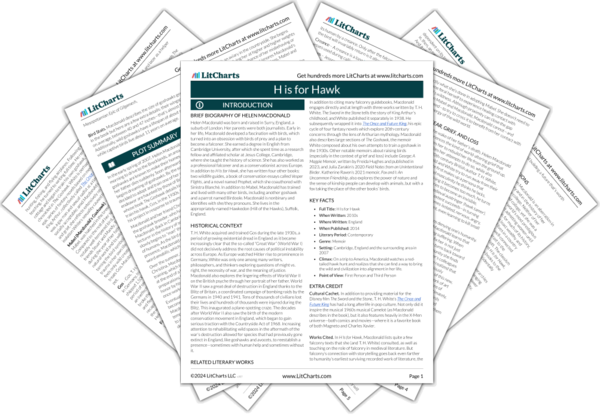Macdonald has just explained to readers White’s tendency to try to seek cover, to go to ground, when threatened. Yet, when she imagines him in his blind, it’s unclear to what degree she’s projecting her own desires onto him. After all, she’s the one who’s already told readers that she longs to be invisible and solitary like a hawk. When she imagines White’s rite of passage, then, she’s expressing her own desire to escape suffering by finding a way to disassociate herself from the world of human connections.
